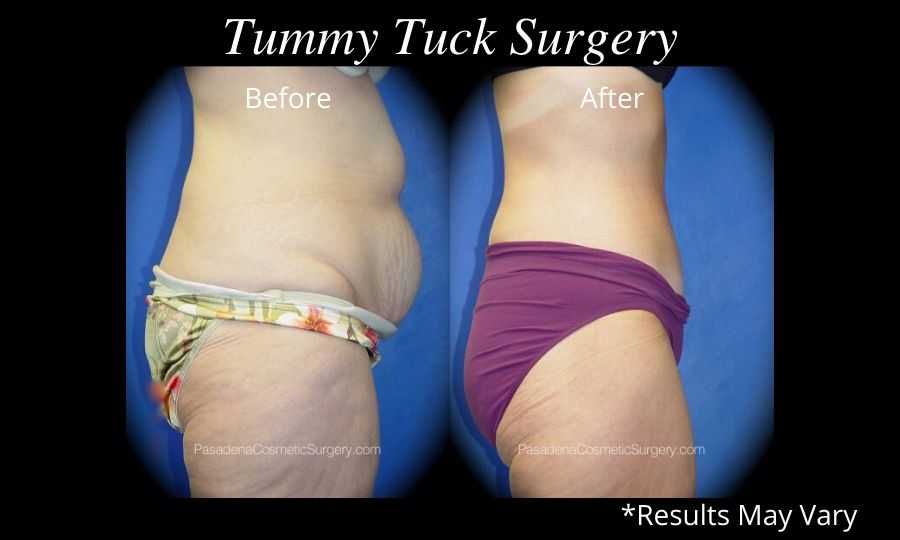3 Minute Read:
The tummy tuck is one of the most popular plastic surgery procedures because of its remarkable ability to tighten abdominal muscles, reduce fat, and remove loose skin after pregnancy, weight loss, or the inevitable signs of age.
While this cosmetic procedure improves the appearance of your stomach, making it firmer and flatter, tummy tuck surgery cannot solve every cosmetic issue with the midsection.
To determine whether or not tummy tuck surgery is right for you, it is necessary to understand what a tummy tuck can accomplish and what it can not.
What Issues Can a Tummy Tuck Address?
Excess Skin
After pregnancy or weight loss, you may develop some excess skin in your lower abdomen. Excess skin might contribute to insecurity wearing specific clothing styles or swimsuits. A tummy tuck removes excess skin to create a smooth and taut abdominal contour, making you feel more comfortable wearing a variety of clothing or baring your stomach altogether.
Localized Fat
For many people, the lower abdomen is the hardest part of the stomach to tone—especially after one or more pregnancies. A tummy tuck focuses on toning the lower abdomen, making it flatter and more appealing.
Diastasis Recti
Diastasis recti is a common occurrence after childbirth. This develops when the two halves of the abdominal muscles separate due to the pressure of your expanding uterus during pregnancy. Unfortunately, separated abdominal muscles cannot repair themselves and, instead, result in a pooched abdominal appearance. Tummy tuck surgery repairs and tightens these muscles to eliminate diastasis recti.
Poor Posture and Back Pain
Sometimes, the excess fat and separated abdominal muscles in the lower abdomen affect your posture because it changes the way you carry yourself. And poor posture often results in lower back pain. Because tummy tuck surgery repairs the muscles and removes excess fat, it can improve your posture, which may lessen back pain.
Poorly Positioned Belly Button
Patients who have lost a significant amount of weight and undergo a tummy tuck to eliminate excess skin, they may discover that the new placement of their belly button is less than natural. Tummy tuck surgery can reposition the belly button so that it sits at the correct elevation on your abdomen.
Ventral Hernias
A ventral hernia is a bulge of tissues in your abdominal wall. The incisions and surgical techniques used to repair a ventral hernia are the same as a tummy tuck, except a tummy tuck also provides aesthetic benefits.
What Does a Tummy Tuck Surgery Not Address?
Stretch Marks
Stretch marks develop along the abdomen and surrounding areas due to fluctuations in size. A tummy tuck does not remove stretch marks unless they are located on the area of skin that is removed. The remaining stretch marks may become less visible, but they will not be removed completely.
Obesity
Although a tummy tuck removes excess fat and skin, this is not a weight loss surgery or an alternative to a healthy lifestyle. The surgery targets localized fat pockets using liposuction techniques but does not remove a significant amount of weight.
Fat in the Upper Abdomen
A tummy tuck removes excess fat in the lower part of the stomach, yet, it does not contour the upper abdomen. Liposuction of the upper abdomen is required to receive these results.
Contouring of the Hips, Thighs, or Buttocks
A traditional tummy tuck only addresses the abdomen. Patients interested in contouring the surrounding areas may consider combining their tummy tuck with a body lift procedure, a Brazilian Butt Lift procedure, or thigh lift surgery.
Want to Learn More About Tummy Tuck Surgery?
If you would like to learn more about tummy tuck surgery in Pasadena, California, contact us at (626) 449-8910 or fill out our online contact form.




